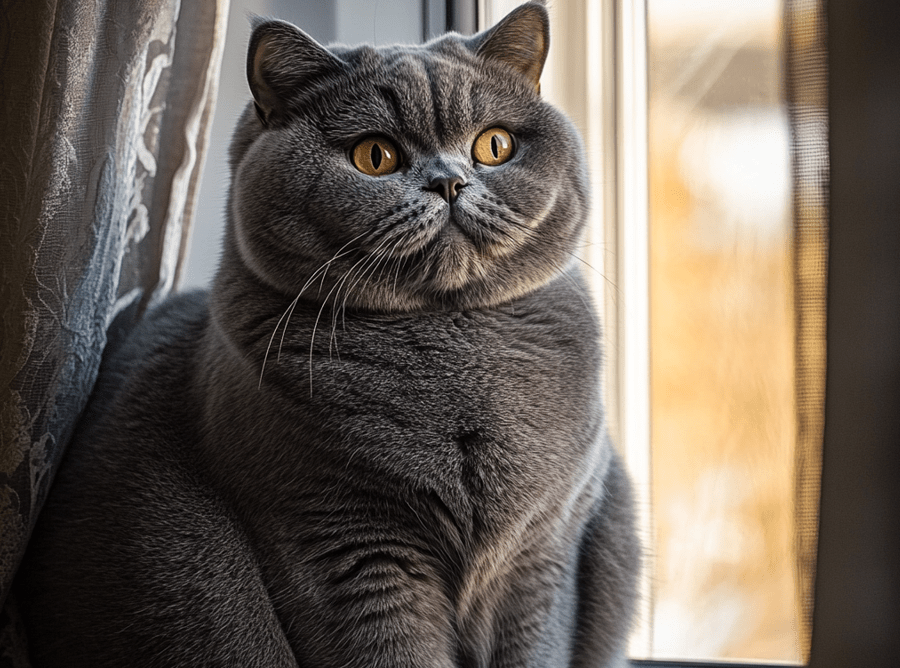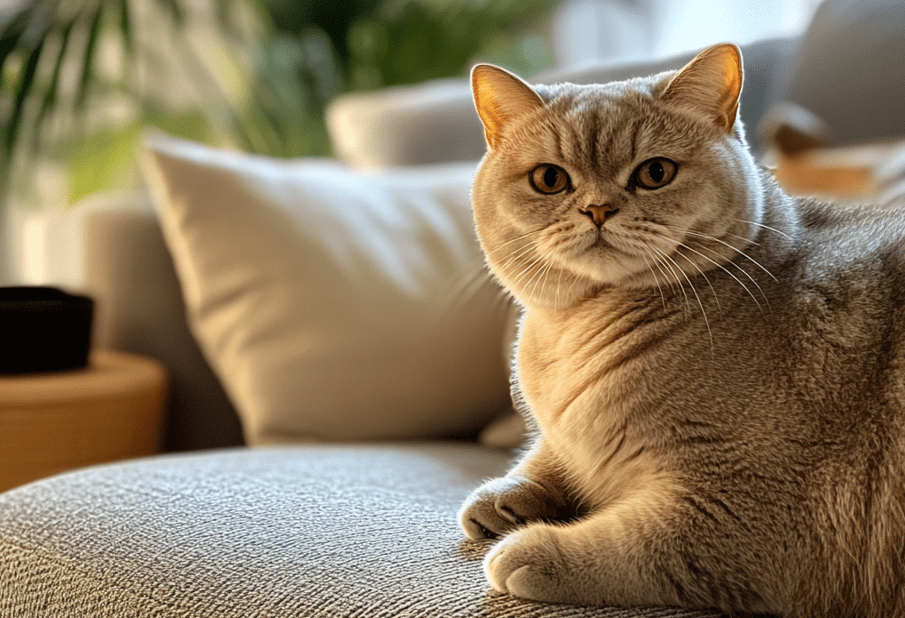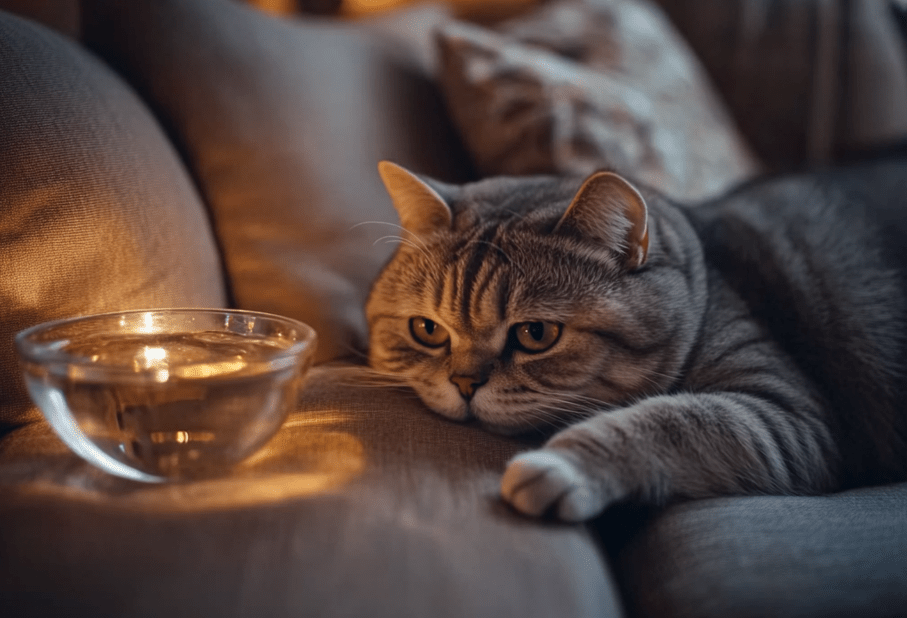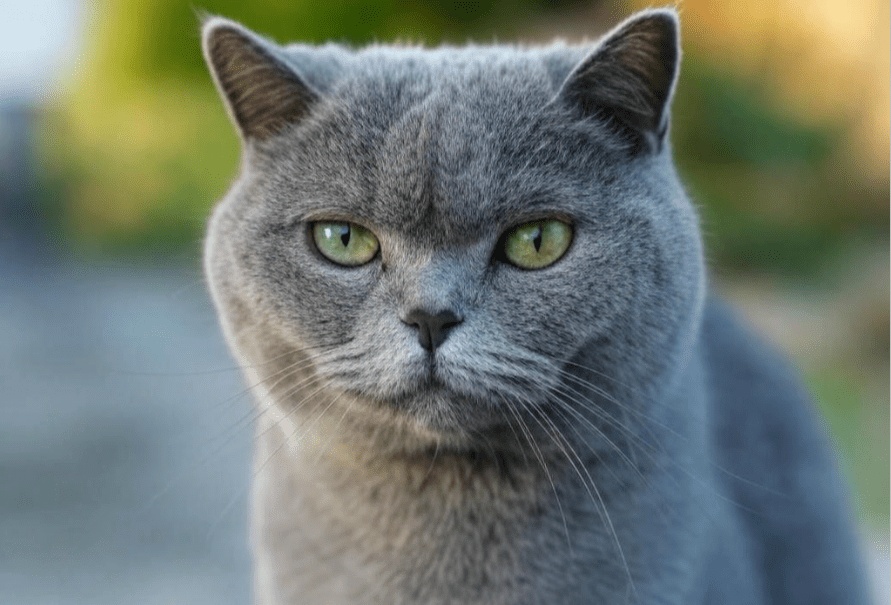
British Shorthair cats, with their plush coats and teddy-bear-like charm, are adored for their calm demeanor and sturdy build. However, their naturally stocky frame can make British Shorthair cats prone to weight gain, which can impact their health and quality of life. Effective weight management is essential to ensure these feline companions remain active, happy, and healthy. In this comprehensive guide, we’ll explore the causes of weight gain in British Shorthairs, practical strategies for maintaining a healthy body, and natural approaches to support their well-being, empowering owners to help their cats thrive.
Understanding Weight Issues in British Shorthairs
British Shorthairs are a robust breed, typically weighing between 9–18 pounds, with males often larger than females. Their dense, muscular bodies can sometimes be mistaken for fat, but true obesity poses serious risks, including diabetes, arthritis, and heart disease. Weight management for British Shorthairs involves balancing diet, exercise, and lifestyle to maintain an ideal body condition score (BCS), typically 4–5 on a 9-point scale, where ribs are palpable but not visible.
Why Are British Shorthairs Prone to Weight Gain?
Several factors contribute to weight gain in British Shorthairs:
Genetics: Their stocky build and slower metabolism make them efficient at storing energy, a trait from their working-cat ancestors.
Sedentary Nature: British Shorthairs are less active than high-energy breeds, preferring lounging over leaping.
Diet: Overfeeding or calorie-dense foods can quickly tip the scales.
Neutering/Spaying: These procedures reduce metabolism, increasing weight gain risk if diet isn’t adjusted.
Age: Older British Shorthairs may gain weight as activity levels decline.
Environment: Indoor cats, common for this breed, have fewer opportunities for natural exercise.
Understanding these factors helps tailor a weight management plan suited to your British Shorthair’s needs.
Recognizing Weight Problems in British Shorthairs
Identifying whether your British Shorthair is overweight is the first step. Look for these signs:
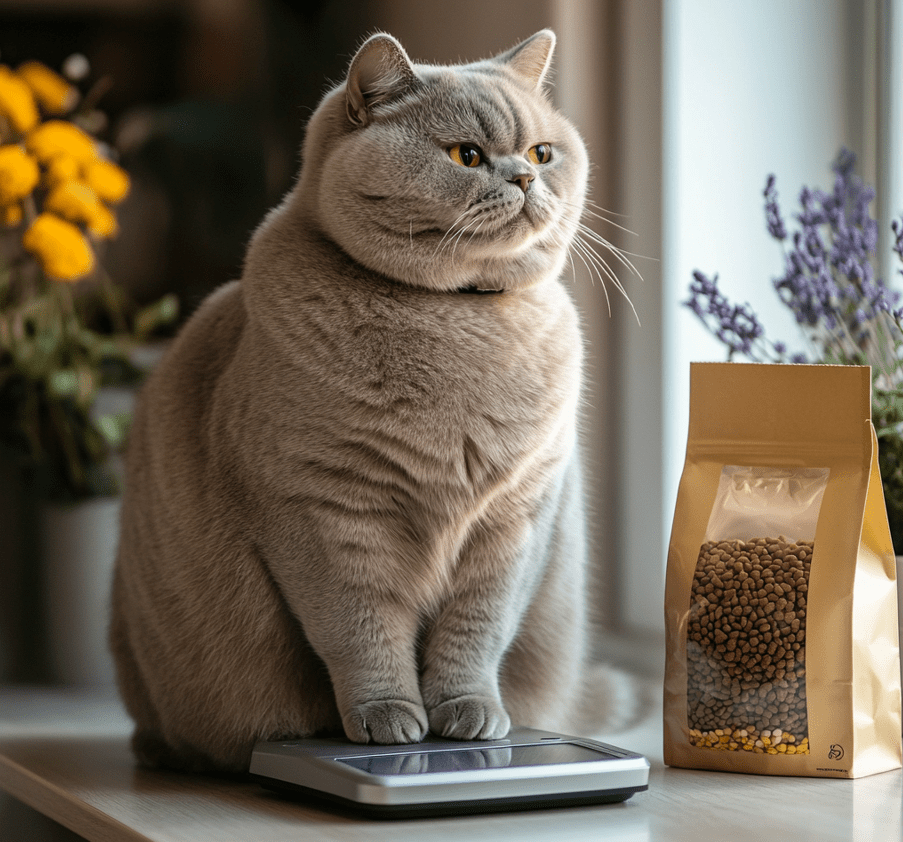
Body Shape: A sagging belly, no defined waist, or inability to feel ribs under a layer of fat.
Lethargy: Reduced interest in play or difficulty jumping.
Breathing Issues: Panting or labored breathing after minimal activity.
Grooming Challenges: Difficulty reaching certain areas, leading to matted fur.
Weighing: Regular weigh-ins showing consistent increases beyond breed norms.
Consult a veterinarian for a professional BCS assessment and to rule out medical conditions like hypothyroidism or Cushing’s disease, which can cause weight gain.
Natural Strategies for British Shorthair Weight Management
Effective weight management combines diet, exercise, and lifestyle adjustments. Below are actionable, natural strategies to help your British Shorthair achieve and maintain a healthy weight.
1. Optimize Their Diet
Diet is the cornerstone of weight management. A balanced, species-appropriate diet supports a healthy weight without compromising nutrition.
Portion Control: Measure food precisely using a kitchen scale. Follow vet-recommended calorie guidelines (typically 20–25 calories per pound of ideal body weight daily for maintenance, less for weight loss).
High-Protein, Low-Carb Foods: Choose wet or raw foods with high protein and low carbohydrates to mimic a cat’s natural diet. Avoid grain-heavy kibble, which can contribute to weight gain.
Wet Food Preference: Wet food is lower in calories per volume, promotes hydration, and helps cats feel fuller. For example, a 10-pound British Shorthair might need 7–8 ounces of wet food daily, split into multiple meals.
Avoid Free-Feeding: Scheduled meals (2–3 times daily) prevent overeating, unlike leaving food out all day.
Treat Moderation: Limit treats to 10% of daily calories. Opt for low-calorie options like freeze-dried meat or single-ingredient treats.
2. Encourage Regular Exercise
British Shorthairs may not be natural athletes, but regular activity is crucial for burning calories and maintaining muscle mass.
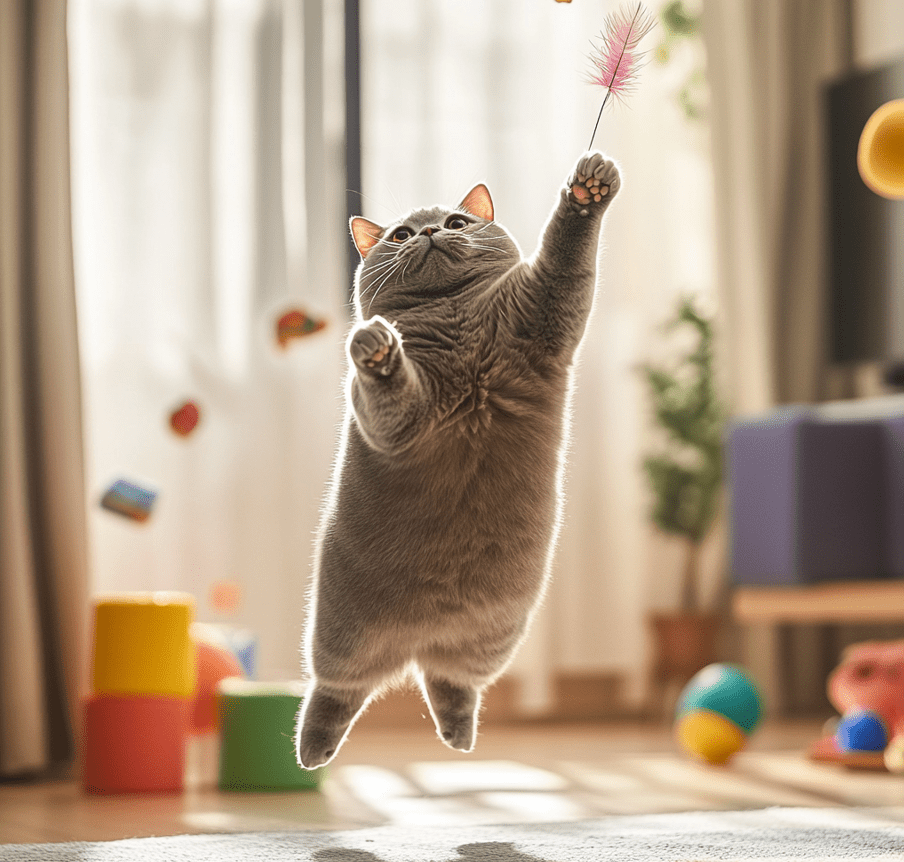
Interactive Toys: Use feather wands, laser pointers, or balls to engage their hunting instincts. Aim for 10–15-minute play sessions twice daily.
Vertical Spaces: Install cat trees or shelves to encourage climbing, which burns calories and stimulates muscles.
Puzzle Feeders: These slow eating and provide mental stimulation, encouraging movement to access food.
Playmate: If feasible, another cat can encourage social play, though ensure compatibility with your British Shorthair’s laid-back nature.
3. Monitor Weight Progress
Tracking progress ensures your efforts are effective and safe. Weight loss should be gradual—0.5–1% of body weight per week—to avoid health risks like hepatic lipidosis.
Weekly Weigh-Ins: Use a reliable pet scale or weigh yourself holding your cat, then subtract your weight.
Body Condition Checks: Assess BCS monthly to confirm fat loss and muscle retention.
Vet Checkups: Schedule visits every 2–3 months during weight loss to adjust plans and monitor health.
Note: Rapid weight loss can harm British Shorthairs, so consult a vet if changes seem too quick.
4. Enrich Their Environment
A stimulating environment reduces stress-eating and encourages natural activity.
Window Perches: Allow your British Shorthair to watch birds or outdoor activity, sparking curiosity.
Scratching Posts: These promote stretching and light exercise.
Rotating Toys: Introduce new toys weekly to maintain interest.
Safe Outdoor Access: A catio or leash-trained walks can provide fresh air and exploration, if your cat enjoys it.
5. Address Stress and Behavior
Stress can lead to overeating or inactivity. British Shorthairs, being sensitive to routine changes, benefit from a stable environment.
Consistent Routine: Feed and play at the same times daily.
Calm Spaces: Provide quiet areas for rest, away from loud noises or other pets.
Pheromone Diffusers: These can reduce anxiety-driven eating.
Positive Reinforcement: Reward play or healthy eating habits with praise or low-calorie treats.
6. Natural Supplements for Weight Support
Certain supplements, when vet-approved, can aid weight management:
L-Carnitine: Supports fat metabolism, helping convert fat to energy.
Omega-3 Fatty Acids: Reduce inflammation, supporting joint health for active cats.
Fiber Supplements: Increase satiety, reducing hunger between meals.
Probiotics: Improve gut health, optimizing nutrient absorption and metabolism.
Always consult a veterinarian before adding supplements to ensure they’re safe and effective for your British Shorthair.
Preventing Weight Gain in British Shorthairs
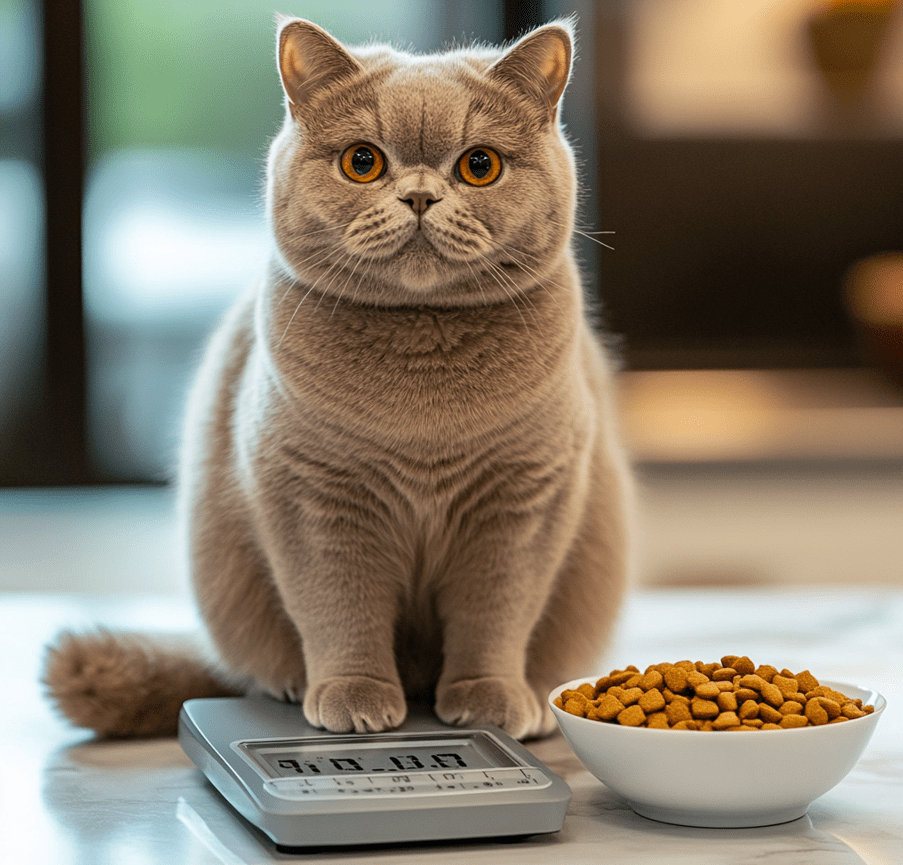
Prevention is easier than correction. Here’s how to keep your British Shorthair at a healthy weight from the start:
Kitten Care: Feed age-appropriate portions to avoid early obesity, which can persist into adulthood.
Post-Neutering Adjustments: Reduce calories by 15–20% after spaying/neutering to match lower metabolism.
Active Lifestyle: Encourage play from kittenhood to build lifelong habits.
Regular Monitoring: Weigh your cat monthly and adjust food as needed, especially during growth or aging.
Quality Diet: Choose nutrient-dense foods to prevent overfeeding for satisfaction.
Common Myths About British Shorthair Weight Management
Let’s clear up misconceptions that can derail efforts:
Myth: “British Shorthairs are supposed to be heavy.”
Fact: Their stocky build isn’t an excuse for obesity; a healthy weight supports longevity.
Myth: “Dry food is best for weight control.”
Fact: Wet food often better controls calories and hydration, aiding weight management.
Myth: “Exercise doesn’t matter for indoor cats.”
Fact: Even low-energy British Shorthairs need activity to burn calories and stay fit.
When to Seek Veterinary Help
While natural strategies are effective, some situations require professional input:
No Progress: If weight doesn’t decrease after 2–3 months of effort.
Sudden Weight Gain: May indicate medical issues like diabetes or hypothyroidism.
Health Symptoms: Lethargy, vomiting, or joint pain during weight loss efforts.
Diet Planning: A vet can design a precise weight loss plan, especially for obese cats.
Vets may recommend bloodwork, prescription diets, or physical therapy for mobility issues, complementing natural approaches.
Case Study: Milo’s Weight Loss Journey
Milo, a 6-year-old British Shorthair, weighed 20 pounds—far above his ideal 12 pounds. His owner, Emma, noticed Milo struggled to jump and seemed lethargic. With vet guidance, Emma implemented:
Diet Shift: Milo switched to portioned wet food (200 calories daily), reducing kibble treats.
Exercise: Daily laser pointer sessions and a cat tree encouraged movement.
Monitoring: Monthly weigh-ins tracked a steady 0.5-pound loss.
Environment: A window perch kept Milo engaged, reducing boredom eating.
After six months, Milo reached 14 pounds, with improved energy and mobility. His story highlights how tailored, natural strategies can transform a British Shorthair’s health.
Conclusion
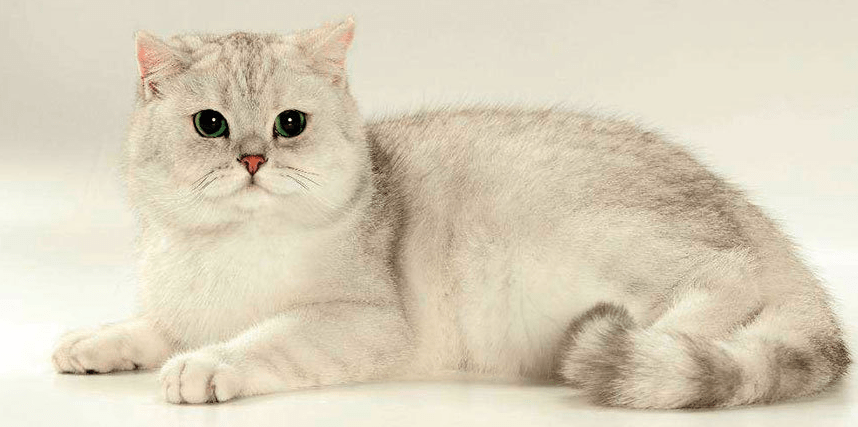
British Shorthair weight management is a journey of balance, combining mindful feeding, regular activity, and a nurturing environment. By understanding your cat’s unique needs and implementing natural strategies, you can help your British Shorthair achieve a healthy body and vibrant life. Start today—measure their food, toss a toy, or schedule a vet visit to set the foundation for lasting wellness. Your British Shorthair’s purrs of contentment will be worth the effort!

